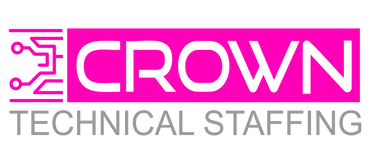The writing is on the wall. The alarms are going off and the sirens are blaring.
Folks are tired!
In the midst of navigating unprecedented inflation, a potential economic downturn, a robust labor market, and the rise of Artificial Intelligence, it appears that U.S. corporations are now contending with an additional challenge – an unparalleled rate of CEO transitions.
The month of May saw 224 U.S.-based CEOs exit their roles, according to data collected by executive coaching firm Challenger, Gray & Christmas. That number is up 52% from the 147 CEOs who left their positions in April, and 49% higher than the 150 CEOs who left their jobs in May of last year.
It’s impossible to know the exact “why” behind so many CEOs transitioning out of their roles, but, it would be remiss of us to not acknowledge mental health and possible burnout playing a role in these decisions.
In December 2021, I decided to hire an executive coach to help me navigate thru my transition into full-time business ownership. We explored topics such as visualization, establishing a morning routine, crafting your personal story, and engaging in passion projects. It continues to be one of the best investments I’ve ever made – both personally and professionally.
In our latest installment of “Engineering 365”, we’ll explore what burnout can look like and what can be done on a daily, weekly, and monthly basis to combat the effects.

Warning signs of C-suite burnout can include the following:
- A lot of unplanned 4 a.m. wake-up times to start the workday or having issues sleeping more than seven hours
- Pushing through tasks even though they’re visibly fatigued and stressed – a sign of an over-ambitious workload
- Certain problems keep recurring, indicating the person may not have the space, support or concentration to resolve and act on the issue
- They can’t easily answer the questions “What are you doing for exercise?” or “What are you doing for fun?”
- Behavior that’s out of character for that person, such as irritability, lack of patience, excessive self-criticism, blaming others, forgetfulness, etc., and
- Noticeable changes to physical appearance like weight gain or puffy eyes.
Any combination of these could be a signal that health-conscious adjustments need to be made to someone’s working habits.
Step 1: Setting Boundaries
Setting boundaries for work hours is a critical aspect of preventing burnout. It’s easy to fall into the trap of working late into the night or over the weekend, especially when there’s a lot on our plates. However, it’s essential to start and stop work at reasonable times. This not only ensures we have time to recharge, but it also sends a clear message to our teams that they too should respect their personal time. Whether it’s a good friend, family member, therapist, or coach, it’s imperative to have someone who can challenge your thinking and give you another perspective. Find your tribe. By identifying patterns and regaining clarity on priorities, you can establish better boundaries, for instance by delegating where necessary, by saying “no” to projects that do not serve you long-term, and by taking better care of yourself.
Step 2: Values
What values are being honored at work and in your personal life? Or, more importantly, which values are being disregarded? Our values are present when we feel happiest. When we’re out of sync with our values, we can feel depleted, aimless, and exhausted. To combat burnout, we have to be honest about what truly matters to us.
Today, take ten minutes to brainstorm what matters most to you. Contemplate your non-negotiables. Not sure where to start? Just start writing! Write about what you care about, the people you love, and your goals. Look for recurring themes and connections. But remember, the goal isn’t for this list to be impressive — the goal is to help you get clear about what drives you.
Step 3: Visualization
Here are some visualization techniques that I’ve personally used and can be integrated into a daily routine to help prevent burnout:
Guided Imagery Meditation:
- Description: This involves visualizing a peaceful scene, such as a beach, forest, or mountain.
- How to Do It: Close your eyes and take deep breaths. Imagine yourself in a serene place, focusing on the details like the sound of the waves, the warmth of the sun, or the smell of the trees.
- Benefits: It helps in calming the mind and body, reducing stress, and enhancing overall well-being.
Future Self-Visualization:
- Description: This exercise involves visualizing yourself in the future, having achieved your goals, and overcoming current challenges.
- How to Do It: Imagine meeting your future self, who is successful, content, and balanced. What advice would they give you? What steps did they take to get there?
- Benefits: This can boost confidence, motivation, and provide clarity on the path forward.
Step 4: Track (And Observe) Your Time
Spend a few weeks keeping track of the tasks, activities, and rhythms that fill your day. Notice what gives you energy and what drains you. Next, get curious about what it feels like in your body, heart, and mind when you’re nearing exhaustion and burnout. Finally, notice the ties between what fills up most of your time and the values you’ve identified as important.
How much of your time is spent in ways that serve the core values you’ve identified?
Step 5: Passion Projects
This one strikes a personal chord. For the past 7 years, I’ve thrifted and enjoyed the hunt of finding undervalued items at thrift stores, garage sales, etc. It’s tough for the feeling of exhaustion and self-doubt to manifest in an environment of doing the things that you love. They give you something to look forward to, something to strive for. They remind you of your capabilities, your strengths, and your worth. They bring joy, fulfillment, and a sense of accomplishment. They help you reconnect with yourself and rediscover what makes you tick.
Here are a few suggestions for passion projects that Executives can engage in:
- Mentoring – Sharing wisdom with the younger generation can be incredibly fulfilling. It’s about giving back, making a difference, and shaping the leaders of tomorrow.
- Writing – Whether it’s a blog, a book, or articles on LinkedIn, writing can be a great outlet for C-Suite Execs.
- Public Speaking – Public speaking, whether at industry events, universities, or online platforms, can be a great way to reach out and connect with others.
- Volunteering – Giving back to the community can bring a sense of purpose and fulfillment. Whether it’s serving at a local food bank, mentoring at-risk youth, or supporting a cause close to their heart, volunteering can provide a much-needed break from the corporate world.
- Learning a New Skill – The process of learning something new can be incredibly invigorating and can help executives break away from their routines.
The journey to combating burnout is a personal one, a journey that requires introspection, self-awareness, and a commitment to change. If you’d like to speak about transitioning to a new, more closely aligned role, drop me a note at [email protected]. If you’ve found value in this article and would like to continue getting 1x week notifications, I encourage you to subscribe to our newsletter.


